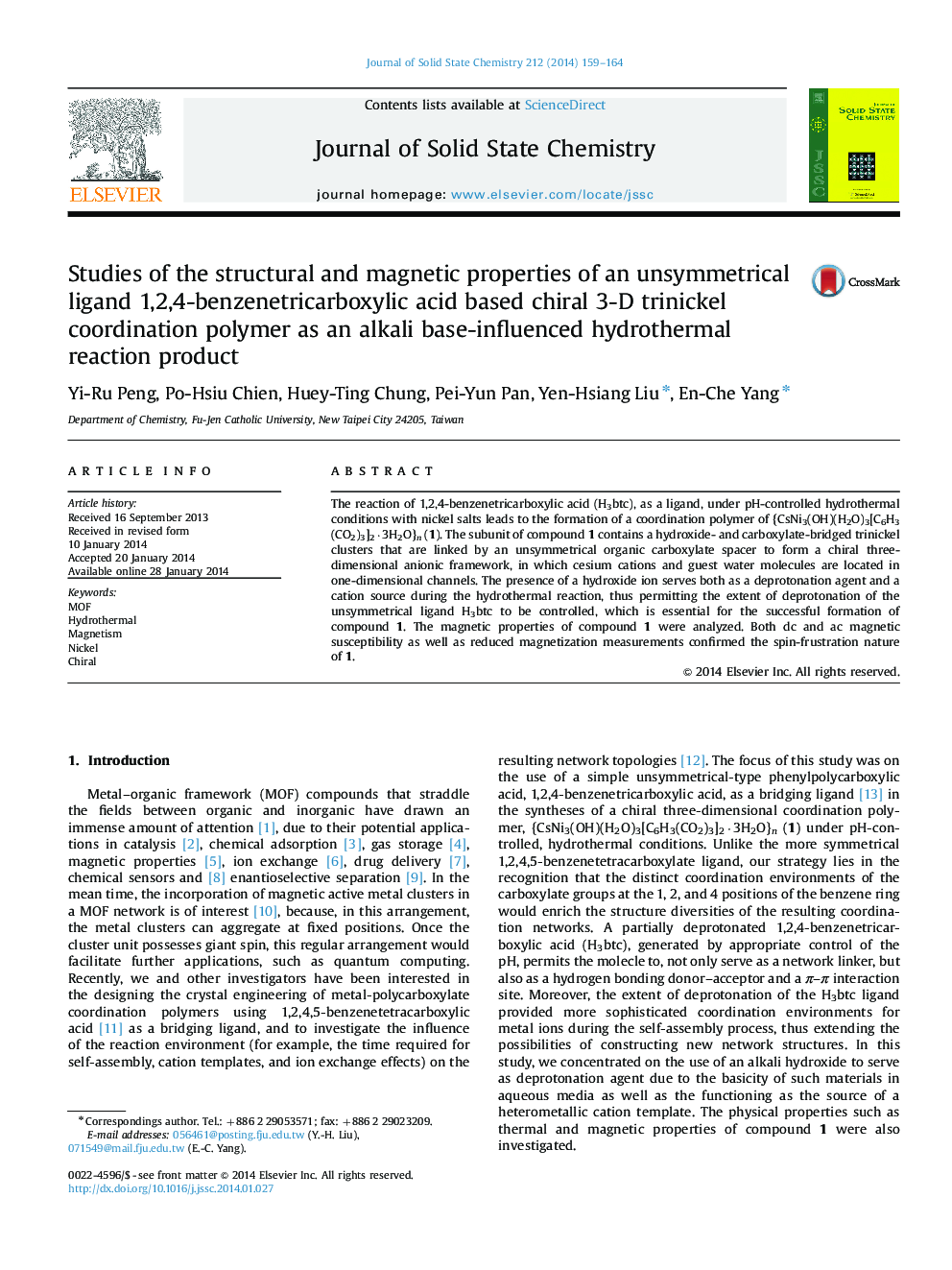| Article ID | Journal | Published Year | Pages | File Type |
|---|---|---|---|---|
| 1329872 | Journal of Solid State Chemistry | 2014 | 6 Pages |
•A new chiral three-dimension coordination polymer were made.•An un-symmetric bridging ligand was used.•Alkali metal ion Cs+ was incorporated in the structure.•Magnetic properties were studied.
The reaction of 1,2,4-benzenetricarboxylic acid (H3btc), as a ligand, under pH-controlled hydrothermal conditions with nickel salts leads to the formation of a coordination polymer of {CsNi3(OH)(H2O)3[C6H3(CO2)3]2·3H2O}n (1). The subunit of compound 1 contains a hydroxide- and carboxylate-bridged trinickel clusters that are linked by an unsymmetrical organic carboxylate spacer to form a chiral three-dimensional anionic framework, in which cesium cations and guest water molecules are located in one-dimensional channels. The presence of a hydroxide ion serves both as a deprotonation agent and a cation source during the hydrothermal reaction, thus permitting the extent of deprotonation of the unsymmetrical ligand H3btc to be controlled, which is essential for the successful formation of compound 1. The magnetic properties of compound 1 were analyzed. Both dc and ac magnetic susceptibility as well as reduced magnetization measurements confirmed the spin-frustration nature of 1.
Graphical abstractA chiral three-dimension MOF compound and its magnetic properties are described.Figure optionsDownload full-size imageDownload as PowerPoint slide
